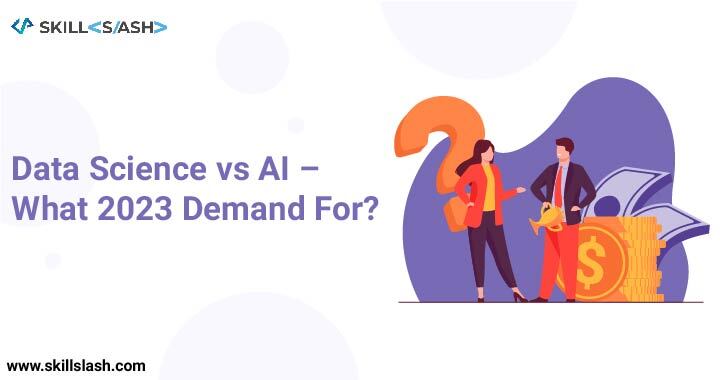
The legal profession has long been associated with tradition, precedent, and the human touch. However, in today's rapidly evolving technological landscape, the legal industry finds itself at a critical crossroads. The integration of data science, artificial intelligence (AI), and machine learning has the potential to transform the practice of law in unprecedented ways. In this comprehensive exploration, we will examine the intersection of law and technology, why lawyers need to embrace data science, AI, and machine learning, and the profound impact these innovations are having on the legal profession.
The Legal Landscape in the Digital Age
The legal industry has historically been characterized by labor-intensive tasks, extensive documentation, and a reliance on legal research. While these fundamentals remain essential, technology has disrupted and expanded the scope of legal practice in several ways:
1. Electronic Discovery (eDiscovery)
The digital age has ushered in an explosion of electronic documents and data. eDiscovery tools powered by AI and machine learning algorithms enable lawyers to efficiently sift through vast datasets, identify relevant information, and streamline the discovery process in litigation.
2. Legal Research
Traditionally, legal research involved poring over volumes of case law and legal texts. Today, AI-driven platforms like ROSS and LexisNexis use natural language processing (NLP) to analyze legal documents and provide attorneys with relevant precedents and insights in seconds.
3. Document Review and Due Diligence
Machine learning algorithms can automatically review and categorize legal documents, contracts, and agreements, saving lawyers countless hours of manual labor during due diligence and contract analysis processes.
4. Predictive Analytics
Data science and AI empower lawyers to make data-driven decisions and predict case outcomes with greater accuracy. This is particularly valuable in areas such as litigation strategy and risk assessment.
The Benefits of Embracing Technology in Law
Embracing data science, AI, and machine learning offers several compelling advantages for lawyers and the legal profession as a whole:
1. Efficiency and Cost Savings
Automating time-consuming tasks like document review and legal research significantly reduces the time and costs associated with legal work. Lawyers can focus on more complex, value-added activities.
2. Accuracy and Consistency
AI and machine learning algorithms can analyze vast datasets and identify patterns with a level of accuracy and consistency that is difficult to achieve through manual methods.
3. Enhanced Decision-Making
Predictive analytics and data-driven insights provide lawyers with valuable information to make informed decisions, devise strategies, and assess risks effectively.
4. Accessibility
Technology-driven solutions make legal services more accessible to a broader range of clients, reducing barriers to entry and increasing legal representation.
5. Scalability
Law firms can scale their operations more effectively by leveraging technology. AI-powered tools can handle increasing workloads without the need for proportional increases in staff.
Ethical and Regulatory Considerations
As lawyers increasingly integrate technology into their practices, ethical and regulatory considerations come to the forefront. Ensuring that technology is used in compliance with legal ethics and standards is essential. Key considerations include:
- Data Privacy: Lawyers must safeguard client data and adhere to data protection regulations, especially when utilizing AI and machine learning for analysis.
- Transparency: It is crucial to understand and be able to explain the algorithms and data sources used in legal tech applications to clients and courts.
- Bias and Fairness: Guarding against algorithmic bias and ensuring that AI tools provide fair and equitable outcomes is an ongoing concern.
- Competence: Lawyers must acquire the necessary skills and knowledge to use technology effectively and ethically in their practice.
The Future of Law: Human-AI Collaboration
The integration of data science, AI, and machine learning does not spell the end of the human lawyer. Instead, it augments legal practice, allowing attorneys to focus on high-level tasks that require creativity, critical thinking, and ethical judgment. The future of law lies in the collaboration between human legal professionals and AI-powered tools.
Legal education programs are adapting to this new reality by incorporating technology training into their curricula. This prepares law students to be proficient in utilizing AI and data-driven tools in their careers.
Conclusion
The intersection of law and technology, driven by data science, AI, and machine learning, presents a transformative opportunity for the legal profession. Embracing these innovations enhances efficiency, accuracy, and accessibility while providing lawyers with valuable insights to inform decision-making. However, as lawyers navigate this new landscape, they must remain vigilant in upholding ethical standards and ensuring the responsible use of technology. The future of law is a partnership between human expertise and artificial intelligence, ushering in a new era of legal practice that is more efficient, accessible, and data-driven than ever before. Those who embrace this change will be at the forefront of a legal revolution that benefits clients, attorneys, and society as a whole.
You can also read:
360digitmg data science reviews
360digitmg data science course reviews



























